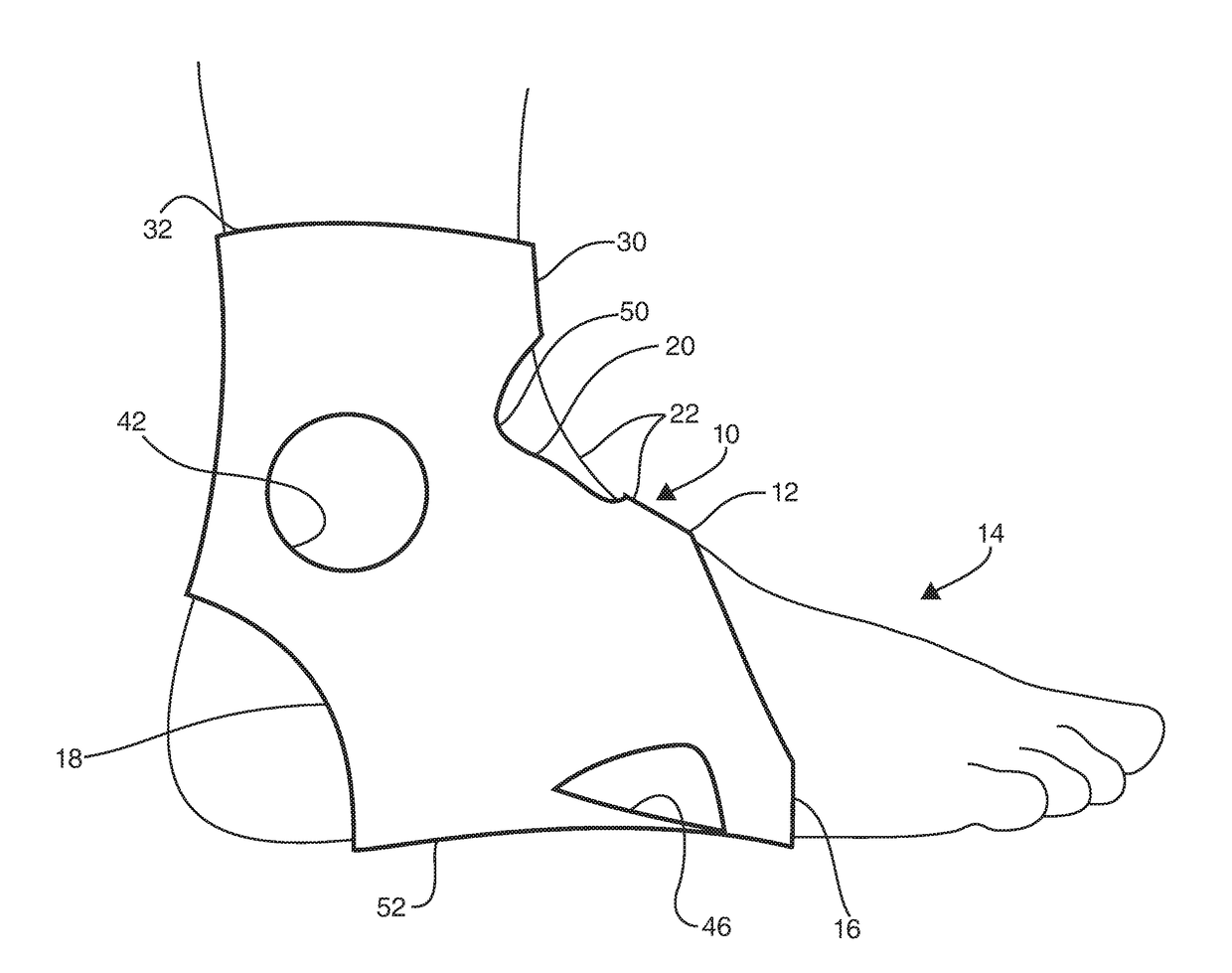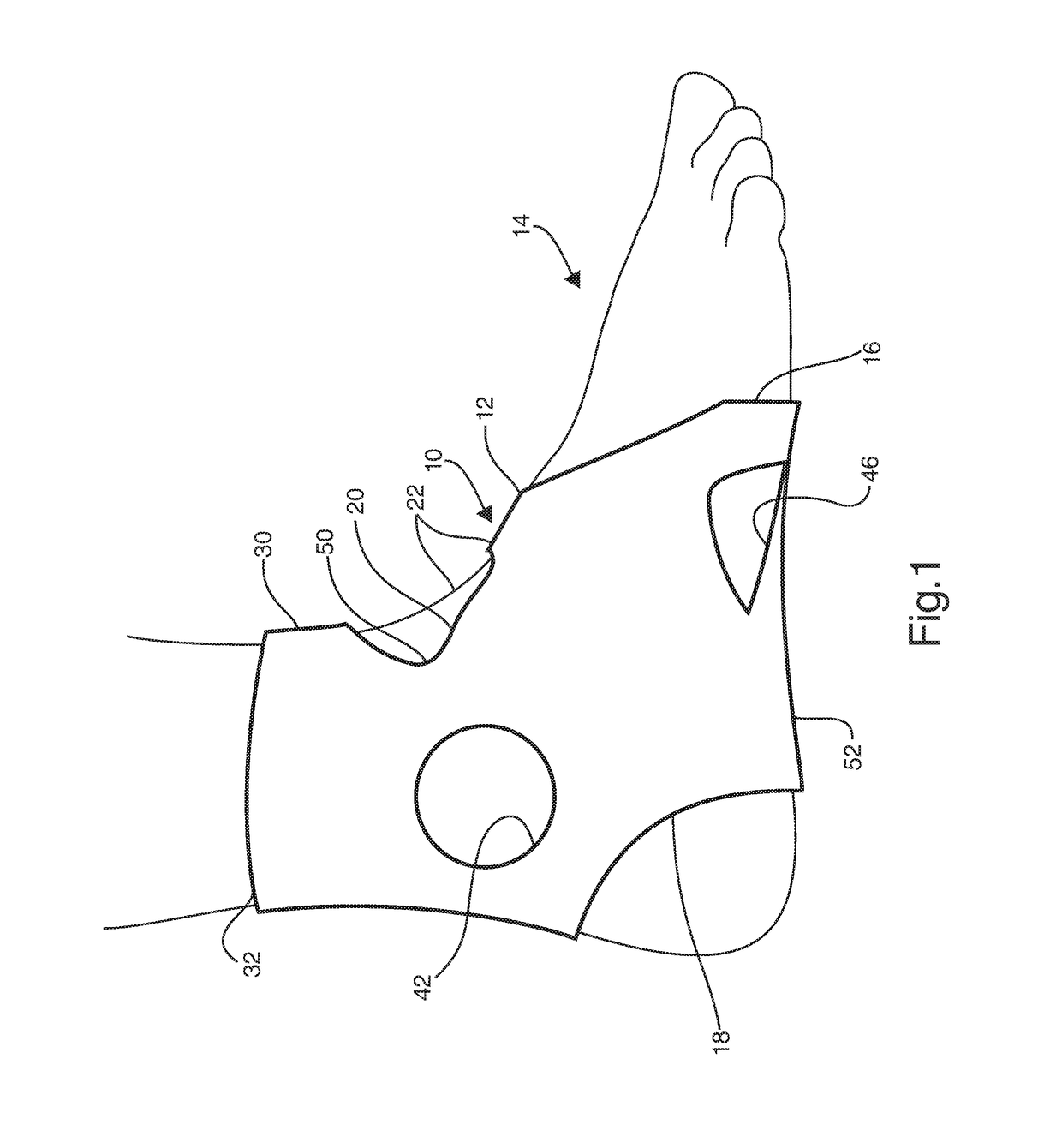Brace or support with atfl support
a brace or support technology, applied in the field of elastomeric athletic or orthopedic brace, support, can solve the problems of inconvenient and long-term use, increased cost of ankle taping, and increased cost of braces, so as to prevent inversion in plantar flexion, avoid “rolling” the ankle, and ensure the freedom of movement
- Summary
- Abstract
- Description
- Claims
- Application Information
AI Technical Summary
Benefits of technology
Problems solved by technology
Method used
Image
Examples
Embodiment Construction
[0076]In the ankle brace 10 that is shown, a more distal portion 12 encircles the mid-foot of the user 14. The brace is provided in a right version and a left version which are mirror images of each other, and also can be provided in multiple sizes, including for example small and large, or pediatric, ladies and men. The brace is illustrated as a right ankle brace and the left ankle brace is a mirror image of the right ankle brace shown.
[0077]The brace is made of a web of flat elastomeric compound or material, which, if opened, would form a flat sheet of relatively uniform or uniform thickness and comprised of a homogenous composition, which optionally includes reinforcing material such as fiber, but which is preferably not a mesh, woven or non-woven fabric in this configuration. The foot portion 12 has a distal opening 16 that is configured to snugly surround the user's foot, at approximately the neck of the fifth metatarsal through the plantar surface to the middle of the first me...
PUM
 Login to View More
Login to View More Abstract
Description
Claims
Application Information
 Login to View More
Login to View More - R&D
- Intellectual Property
- Life Sciences
- Materials
- Tech Scout
- Unparalleled Data Quality
- Higher Quality Content
- 60% Fewer Hallucinations
Browse by: Latest US Patents, China's latest patents, Technical Efficacy Thesaurus, Application Domain, Technology Topic, Popular Technical Reports.
© 2025 PatSnap. All rights reserved.Legal|Privacy policy|Modern Slavery Act Transparency Statement|Sitemap|About US| Contact US: help@patsnap.com



